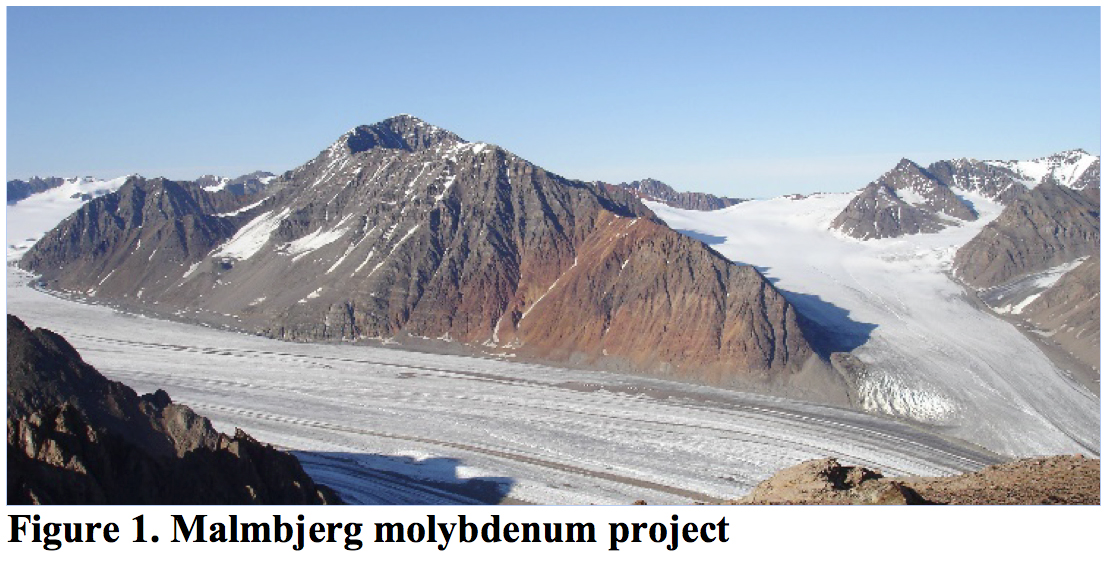🇬🇱 Greenland Resources receives updated draft exploitation license for molybdenum and magnesium

Toronto, Ontario – Greenland Resources Inc. (Cboe CA: MOLY | FSE: M0LY) (“Greenland Resources” or the “Company”) is pleased to provide an update on the exploitation license process and inclusion of magnesium.
The Company has received a final revised draft exploitation license from the regulators that includes positive resolution to certain comments referred in our press release dated January 20, 2025. Among others, the government notified the Company that magnesium was sufficiently substantiated and delineated and is now to be included together with molybdenum in the new draft exploitation license. The regulators will now submit a complete recommendation to the Government of Greenland (Naalakkersuisut) for approval. The signing of the exploitation license takes place in an in-person ceremony in Nuuk with representatives from the Company and the Minister.
Magnesium is a light metal with a high strength-to-weight ratio, primarily utilized in the form of magnesium metal or magnesium compounds such as caustic-calcined magnesia, magnesium chloride, hydroxide and sulfates. Magnesium metal is primarily used as casting alloy in automotive and aerospace industries (64%), aluminum-base alloys for packaging and transportation (18%), and in the desulfurization of iron and steel (4%). Smelter production of magnesium metal in 2024 was 1 billion metric tonnes, 85% coming from seawater, while smelter capacity worldwide is double. Also, approximately 75% of magnesium compounds serve industrial purposes including fertilizers, cattle feed, Epsom salts, heat-resistant bricks, de-icing etc (USGS 2024). China produces 89% of the world magnesium and Europe sources 97% of its magnesium from China, with the remainder coming from countries including Russia, Israel, and Turkey (EC, 2023). Neither the U.S. nor the EU has domestic magnesium production, and both classify it as a critical or strategic mineral. In the U.S., the Department of Defense recently invested in a company that aims to extract magnesium from seawater using innovative technologies. In addition to the existing magnesium content in the ore, the Company is working on extracting magnesium from the saline water contained in the tailing management facility used to process ore.
About Greenland Resources Inc.
Greenland Resources is a Canadian public company with the Ontario Securities Commission as its principal regulator and is focused on the development of its 100% owned Climax type primary molybdenum deposit located in central east Greenland. The Project has also magnesium as a bi-product, a market dominated 89% by China. The Malmbjerg molybdenum project is an open pit operation with an environmentally friendly mine design focused on reduced water usage, low aquatic disturbance and low footprint due to modularized infrastructure. The Malmbjerg project benefits from an NI 43-101 Definitive Feasibility Study completed by Tetra Tech in 2022, with an US$820 million capex and a levered after-tax IRR of 33.8% and payback of 2.4 years, using US$18 per pound molybdenum price. The Proven and Probable Reserves are 245 million tonnes at 0.176% MoS₂, for 571 million pounds of contained molybdenum metal. As the high-grade molybdenum is mined for the first half of the mine life, the average annual production for years one to ten is 32.8 million pounds per year of contained molybdenum metal at an average grade of 0.23% MoS₂, approximately 25% of EU total yearly consumption. The project had a previous exploitation license granted in 2009.
With offices in Toronto, the Company is led by a management team with an extensive track record in the mining industry and capital markets. For further details, please refer to our website www.greenlandresources.ca and our Canadian regulatory filings on Greenland Resources’ profile at www.sedarplus.com.
The Project is supported by the European Raw Materials Alliance (ERMA). ERMA is managed by EIT RawMaterials, an organization within the EIT, a body of the European Union.
About Molybdenum and the European Union
Molybdenum is a critical metal used mainly in steel and chemicals that is needed in all technologies in the upcoming green energy transition. When added to steel and cast iron, it enhances strength, hardenability, weldability, toughness, temperature strength, and corrosion resistance. Based on data from the International Molybdenum Association and the European Commission Steel Report, the world produced around 576 million pounds of molybdenum in 2021 where the European Union (“EU”) as the second largest steel producer in the world used approximately 24% of global molybdenum supply and has no domestic molybdenum production.
Originally published on 22 April by Greenland Resources.
Announcements are published as a service to readers. The sender is responsible for all content.
Announcements for publication can be submitted to [email protected].